Flat tire. Car towed. Rental Car. Four new tires. Thai food. Car camping at the trailhead. Starting the trail one day late. All these were unexpected happenings at the start of our adventure to find this species and other fascinating and “new to us” plants over two days in the Owens Peak Wilderness. Life gave us some setbacks, but we were still able to find the plant on the afternoon of June 4th, 2023. Woot Woot!
We started going south on the Pacific Coast Trail at the Chimney Creek Campground trailhead and slogged our way through the high temps and dry air, finally reaching the trail saddle around noon. After Trevor did a scamper up the mountain, and I had an awesome chat with “Flow” aka Mike, a PCT-er we were finally en route down towards our eventual camp, and hopefully our target.
Trevor knew the rough location of a population, but once we rounded the rocky corner with our large backpacking packs (which felt heavier and heavier throughout the day) and we got sight of a few plants, so those bags were quickly thrown to the ground. We scampered up the hillside a slight bit to take the photos in this blog. During the photoshoot a few PCT-ers trotted by, never asking why two nut-heads were up the hillside photographing a bright pink ball on a steep talus slope. We couldn’t stop saying “WOW.” What an incredibly showy plant!
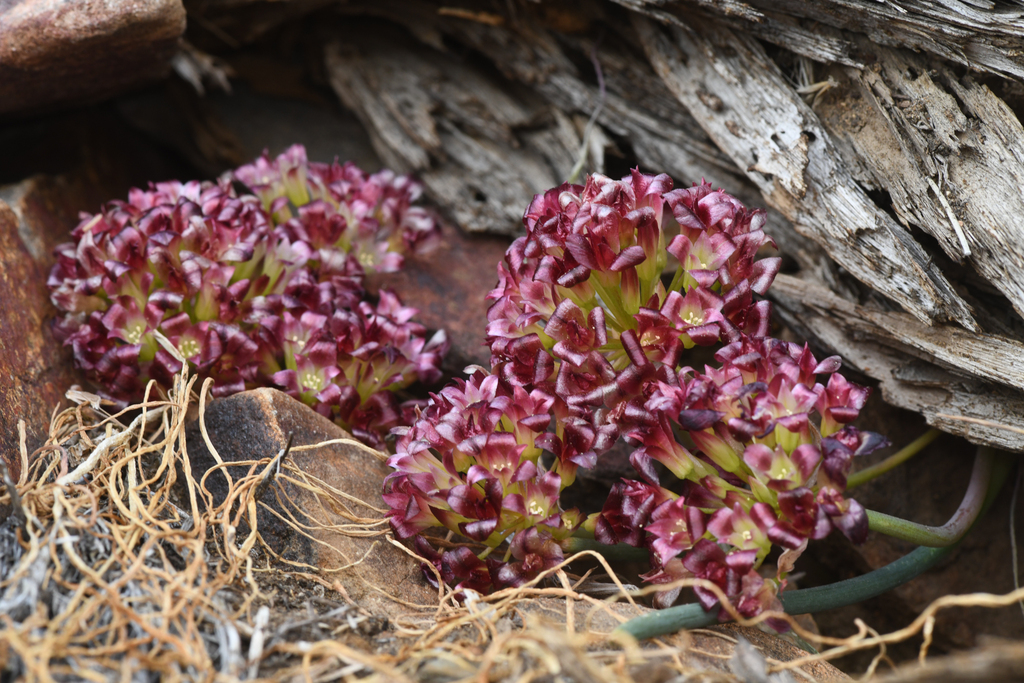
James R. Shevock discovered the mystery plant at the time during botanical surveys of the southern Sierra Nevada Mtns. Since this stinker of a species likes steep terrain in unforgiving environments, and humans aren’t mountain goats the full range of the species is still fuzzy. We’ve really enjoyed chasing Shevock’s points and meeting the plants named after him. Maybe one day we can meet this legend, who is currently a Research Associate in the Department of Botany at the California Academy of Sciences.
Range: This beauty only exists in a small area in the Southern parts of the Sierra Nevada Mtns in California. Specifically, the species can be found near Spanish Needle Peak and Horse Canyon, both in Kern County. Due to its limited range, its California Rare Plant Rank is 1B.3, which translates to “rare throughout their range with the majority of them endemic to California” (CNPS). The population we observed was spread throughout a small area where the trail intersected. However it grows most likely in abundance higher up the hillside, but there were many to enjoy right along the trail.
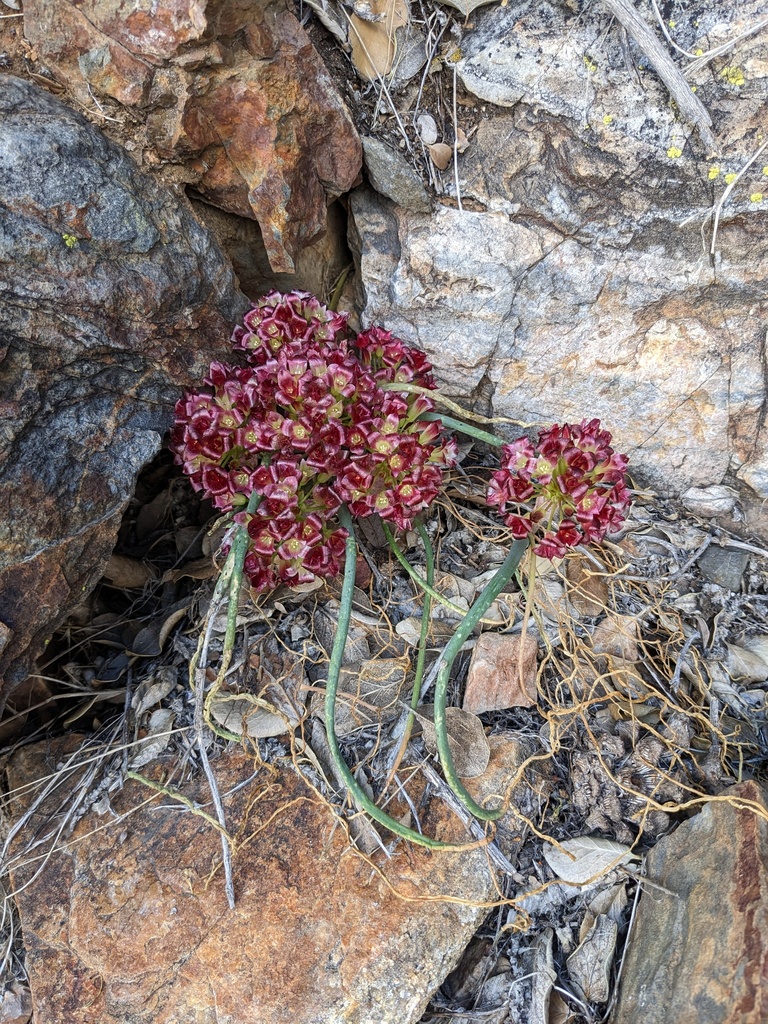

Description: The leaves are long and cylindrical, as many Alliums do. But the real treat is the inflorescence which can contain anywhere between 12 to 30 flowers, which are each 12-14mm across. As you can see in the photos, the flowers are a beautiful pink to maroon near the tips, and white to green basally. Take a look at the tips of the petals, they curl inwards.
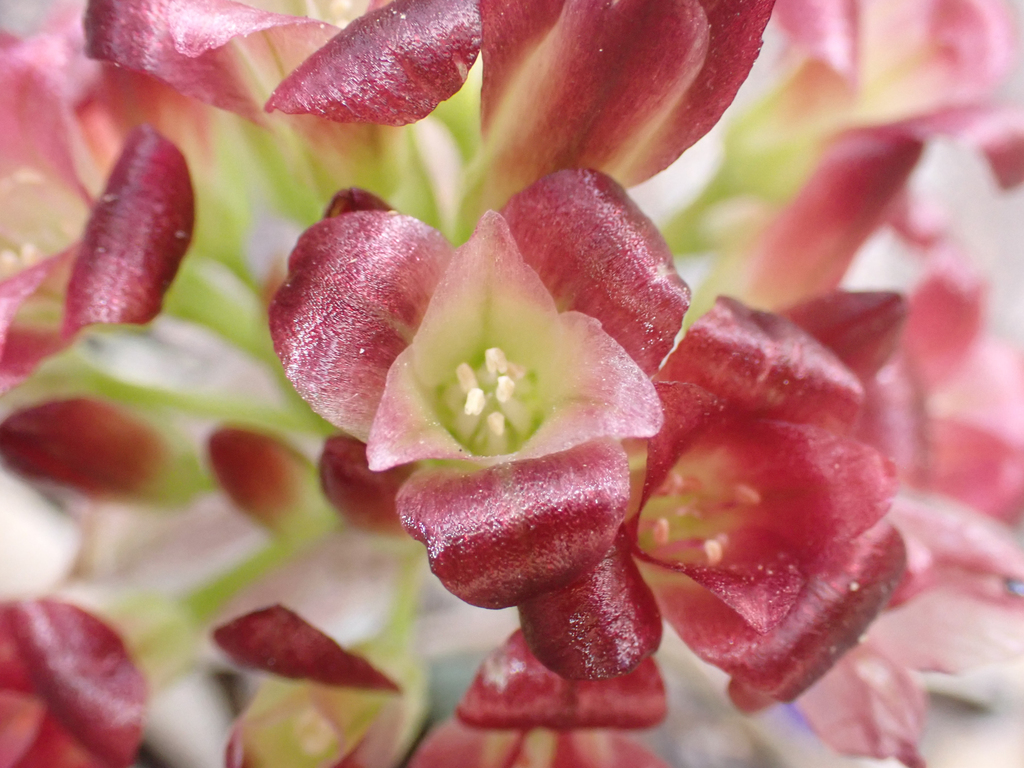
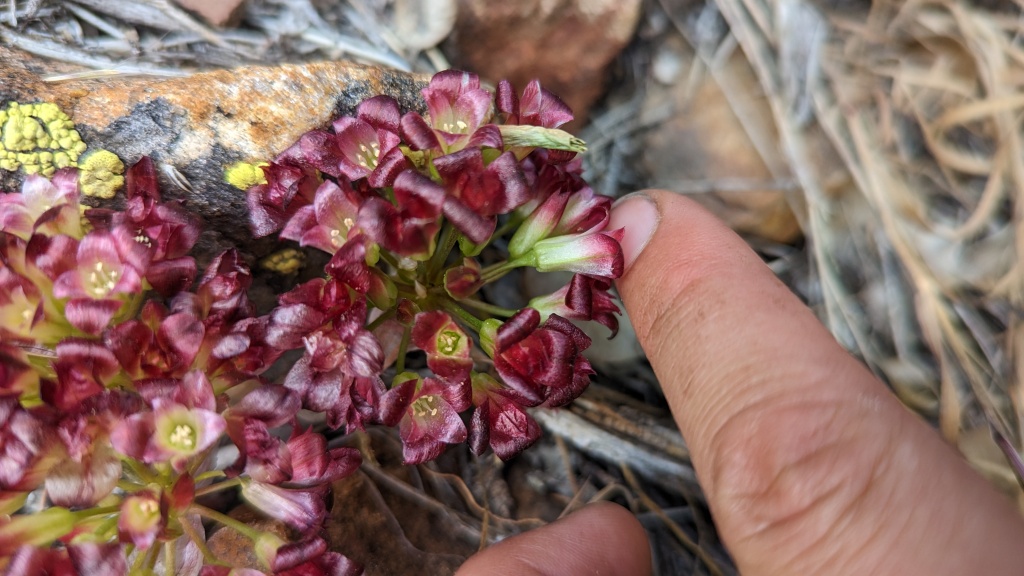
Since it’s an onion, it has a bulb, which is not pictured, but its bulb characteristics are one of a few characteristics that set it apart from other Alliums. The bulb has “long thread-like rhizomes that terminate in bulblets in addition to those produced at the base of the parent bulb” (McNeal, 1987).
Habitat and Plant Communities: It grows in metamorphic talus outcrops in red fir and lodgepole forest communities, at elevations between 2000-2500m.

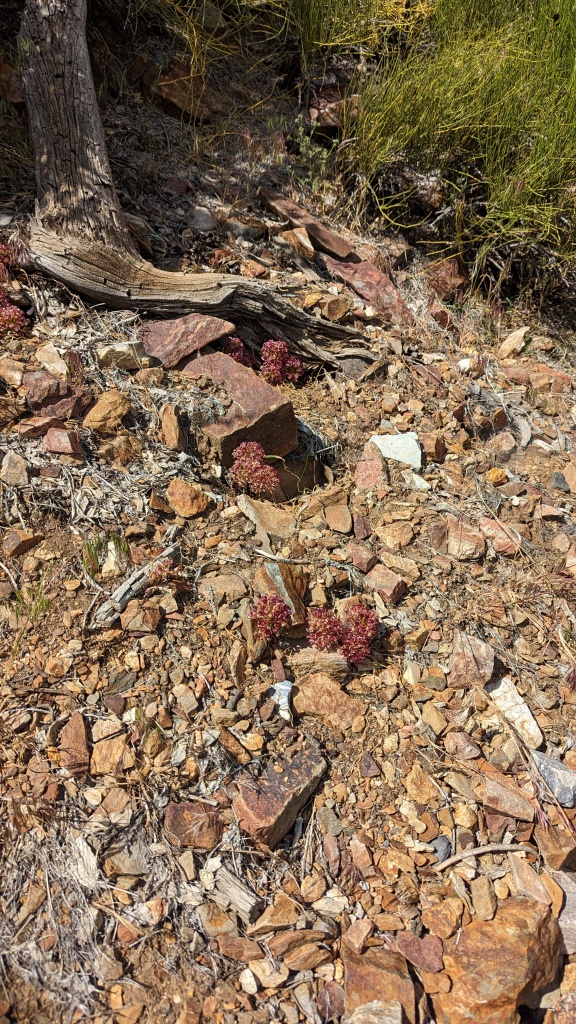
Known Pollinators: White-lined Sphinx (Hyles lineata), Alfalfa Looper Moth (Autographa californica).
What a gorgeous plant! I hope to do a ‘Floral Friday’ post as a regular occurrence on this blog because I want to get back to my original intent of starting this blog.
References:
What a beautiful plant! It might have been worth all the trouble.
LikeLike
It was definitely worth the effort and trouble!
LikeLike